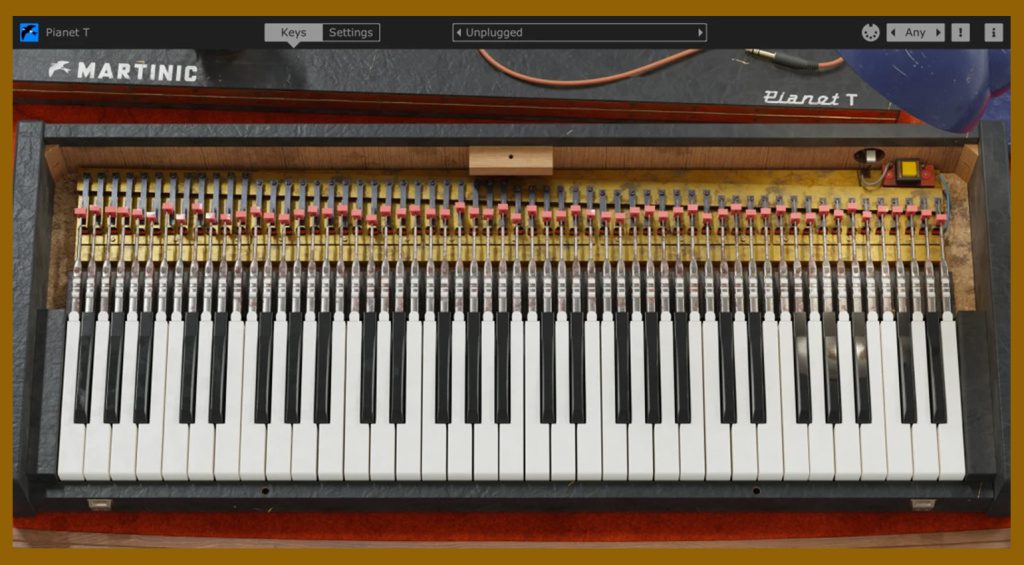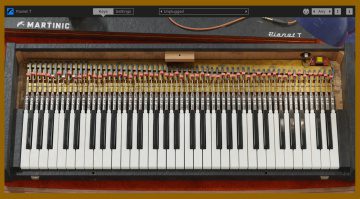Of all the electro-mechanical keyboards, the Hohner Pianet T probably gets the least love or recognition. Martinic set out to address that.
Think about electro-mechanical keyboards and you will, almost certainly, think of the Fender Rhodes or Wurlitzer 200A. Maybe even the Yamaha CP70. But the Hohner Pianet T is always the bridesmaid, never the bride.
Some Pianet T History
Emerging in the early 1960s, the Pianet went through many revisions, but the T variant seems to have been the one that most people remember. And with good reason. This was a compact keyboard, built into its own case and required no electrical power.
“But how did it make a sound??“, I hear you cry. Well, the Pianet T employed patented NASA technology to pluck a series of metal reeds, one for each key. The vibrations of these reeds were picked up by an electromagnetic pickup, a bit like a guitar. All you needed to do was connect an amp and away you go.
The NASA Bit
The NASA bit lies in the plucking mechanism. Each key has a small rubber pad on the end, the bottom of which is a tiny suction cup. These adhere themselves to the reeds and when the key is pressed, the pad rises, the suction breaks and the reed vibrates.
The Martinic Pianet T
And now, Martinic have accurately modelled this simple yet effective procedure to give us the Martinic Pianet T. Using their Advanced Circuitry Emulation (ACE) technique, they have been able to replicate the Pianet T’s mechanism with stunning accuracy.
As we have come to expect, Martini have created a lovely interface that shows off that simple system in all it’s lovely, skeuomorphic glory. But switching to the Settings page delivers a clean, simple interface that gives you control over every detail of the model.

Put simply, the Martinic Pianet T delivers one of the most complete Pianet T experiences outside the real deal, and goes some way beyond it too! It is available now at an introductory price of just £28.50, rising to £57 after. There’s also a free demo version if you want to try before you buy.
Note: This article contains promotional links that help us fund our site. Don’t worry: the price for you always stays the same! If you buy something through these links, we will receive a small commission.






